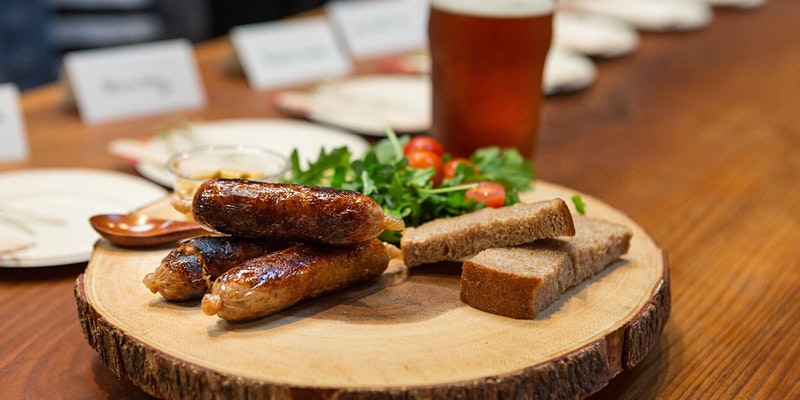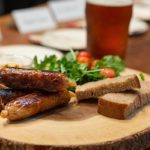Computer-aided drug design (CADD) methods have made a significant impact on the discovery and development of new drugs for treating disease. Our speakers, Alexander MacKerell and Paul Shapiro, Professors of Pharmaceutical Sciences at the University of Maryland School of Medicine, provided us with an an overview of CADD approaches and their applications in designing new drugs that target enzymes involved in cancer and inflammation.
Author: BUGSS
3D Bioprinting Made Easy
You may have heard of bioprinting, where cells and biomaterials can be printed to create custom organs and tissues. But did you know that bioprinting can be achieved through the same techniques used to get graphics printed on a t-shirt? This talk on bioprinting discusses unique strategies to bioprint at home!
Healthy Harbor and Mr. Trash Wheel
What is a trash wheel? What role do they play in protecting Baltimore’s harbor and wildlife from pollution? Adam Lindquist, the director of Healthy Harbor, answered all of our questions about our trash-intercepting, googly-eyed neighbors and the rest of Healthy Harbor’s initiatives!
Rethinking Meat to Feed 10 billion

Growing meat directly from plants, microbes, and animal cells will allow us to build a food system that is better for human, animal, and planetary health. However, catalyzing this paradigm shift is a vast, multidisciplinary effort that requires scientists and engineers from disciplines ranging from tissue engineering and synthetic biology to computational science and chemical engineering. Join The Good Food Institute’s Amy Huang to explore the state of alternative protein research with a focus on illuminating the research white spaces that need to be filled if we’re to power a transition away from industrialized animal agriculture.

Bio of the speaker: Amy Huang is the University Innovation Manager at The Good Food Institute. At GFI, Amy works with students and faculty around the world to turn universities into hubs for alternative protein research and education. In addition to working with scientists and engineers to address priority white spaces in plant-based and cultivated meat technologies, she focuses on bringing diverse stakeholders together through the formation of student groups, global scientific communities, and interdisciplinary research centers. Amy graduated from Harvard University with an AB in economics and global health.
Making plastics from methane
Mango Materials is a San Francisco-based company that manufactures biodegradable materials using bacteria that feed on waste biogas (methane). The company’s end product is a naturally occurring polyhydroxyalkanoate (PHA) polymer that can biodegrade in many different environments. Since 2012, Mango has developed PHA that can be used to create textile fibers as a polyester replacement and that can be used to create injection molded packaging for the cosmetics industry.
This talk by Dr. Anne Schauer-Gimenez, Vice President of Customer Engagement and co-founder, discussed the journey from methane to end-product application, end-of-life biodegradability, and next steps for the company as it transitions to commercialization.
Covid-19: Vaccines and Variants
Thanks to Dr. Nick Wohlgemuth, a virologist at St. Jude’s Children’s Research hospital, for a fantastic seminar on the epidemiology and natural history of the SARS-CoV-2 virus, what the emergence of variants means for the vaccines, and how to tell if someone is protected.
In this seminar, Dr. Govind Rao of UMBC discussed manufacturing biologics on demand, novel approaches to detect Covid-19, and low-cost incubators for preemies with built-in sensors. Amazing developments, and we discuss how they can change the health care landscape!
Biology Meets Art

We had a terrific seminar from Dr. Heidi Hehnly, a leader in exploring the interface between the cytoskeleton and cell membranes, and Dr. Boryana Rossa, an interdisciplinary artist, about their work in BioArt and their efforts to bring faculty and grad students together to share their research or look at it from the perspective of a different discipline.
On the news, we often hear that certain genes have been linked to different traits, ranging from height, to body-mass-index, to heart disease risk. Curious about how these associations are discovered?

In this course, we learned all about the science behind the studies. We learned about basic genetics and genomics and even some statistics. Check out the recordings, and thanks so much to Stephanie Yang for a fantastic class!
Session 1
Session 2
Session 3
Want more info on how linear regression works and how changing the parameters affects the outcome? Check out Stephanie’s Linear Regression App!

On the news, we often hear that certain genes have been linked to different traits, ranging from height, to body-mass-index, to heart disease risk. Curious about how these associations are discovered?
In this course, we learned all about the science behind the studies. We learned about basic genetics and genomics and even some statistics. Thanks so much to Stephanie Yang for a fantastic class!